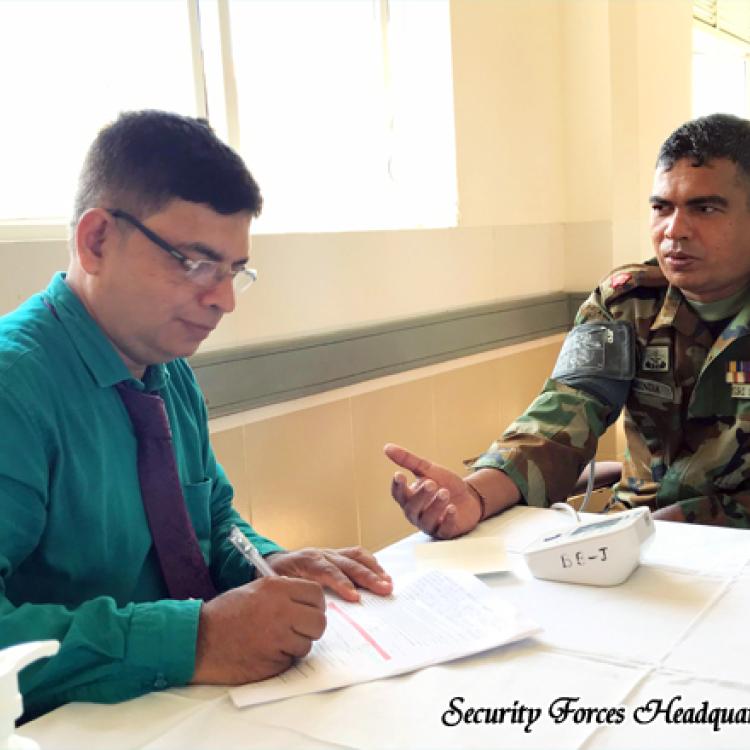The Sri Lankan army continues its militarisation of the Tamil homeland through a variety of strategies, from entering schools to building infrastructure for the military - despite a new government coming into power.
Sri Lanka continues to be one of the most militarised countries in the world, with the Tamil homeland in particular suffering from an occupation that infiltrates civilian and cultural places.
Involvement in Tamil schools and communities
The 10th Vijayabahu Infantry Regiment and the 7th Vijayabahu Infantry Regiment hosted lunch programmes for pre-school children in Jaffna.

Troops from the 7th Vijayabahu Infantry Regiment arranged a lunch for the children of Lakdaru Pre-School in Nawakkuli on 6 November 2024, marking the battalion’s 32nd anniversary.
While these initiatives are marketed as benevolent, they serve to normalise military presence in educational spaces, influencing the next generation of the Tamil population.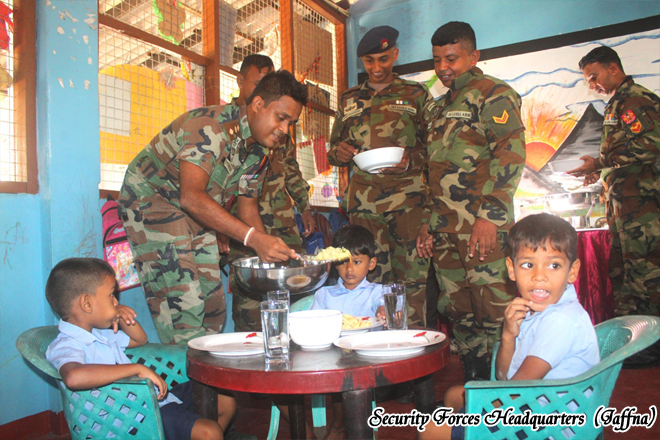
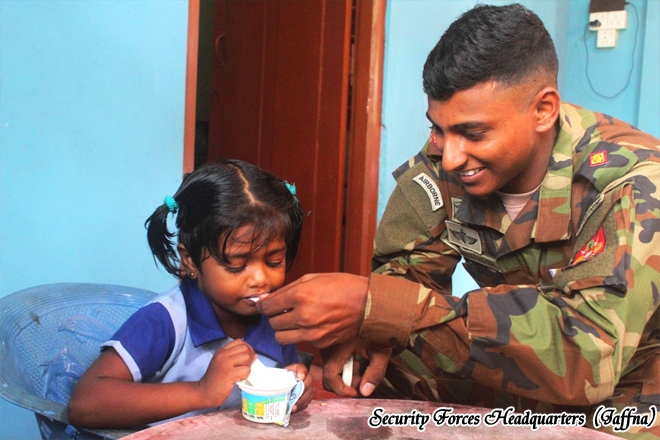
A dengue prevention campaign was conducted by the Army at a Tamil Roman Catholic mixed primary school in Thevanpiddy.
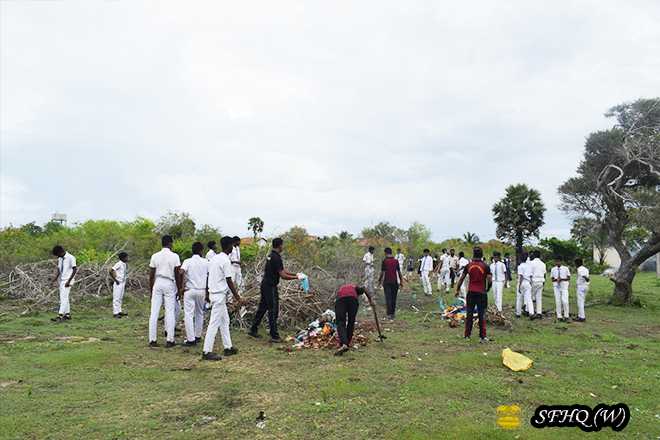
Expansion of military infrastructure
A new officers’ ward complex was inaugurated at the Palaly Base Hospital in Jaffna, furthering the army's control of critical facilities of the Tamil homeland.
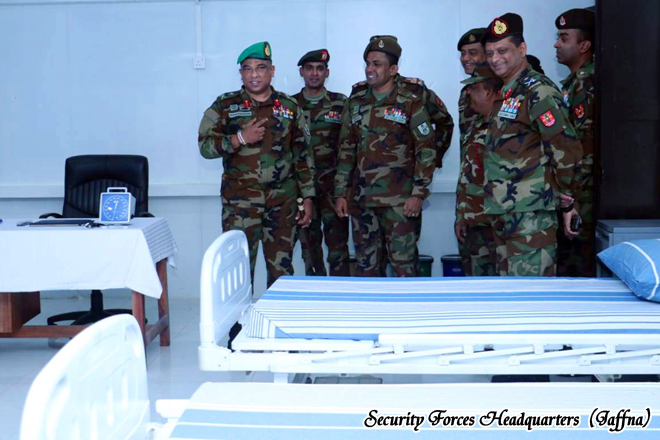
The 24th Infantry Division established a vehicle yard to support its operations, developing its logistical capabilities.
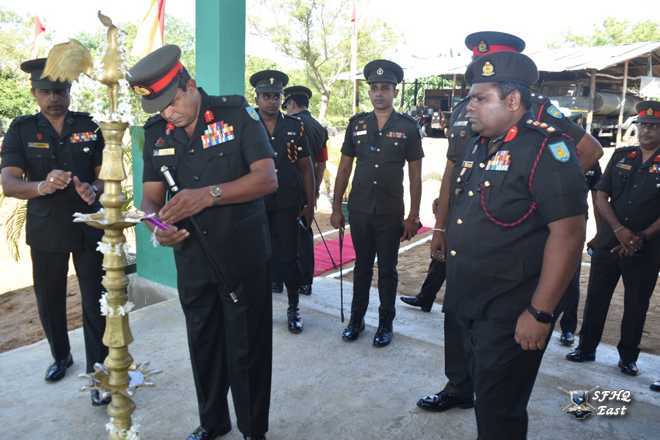
Housing and agricultural projects
The 2nd Volunteer Battalion of the Vijayabahu Infantry Regiment constructed a house for one of its Sinhala soldiers in the Vanni region, while many Tamils remain displaced, with a lack of housing assistance in the area.
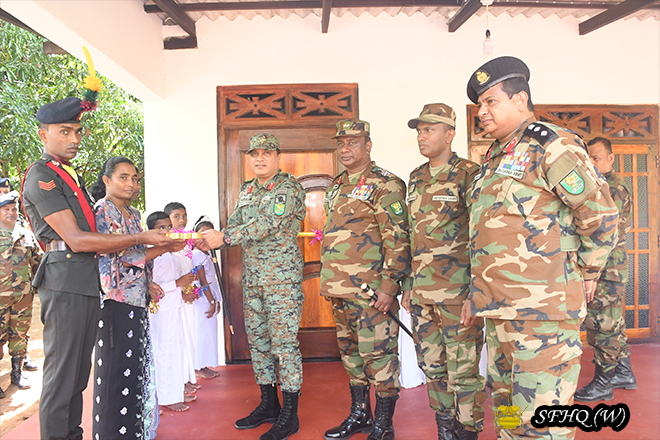
Soldiers from the 56th Infantry Division began cultivating paddy fields in the Maha season, with plans to distribute the harvest to Sri Lankan soldiers at affordable rates, sidelining the local Tamil population. Such moves deepen the economic dependence of the Tamil people on the Sri Lankan army and leaves local producers unable to compete.
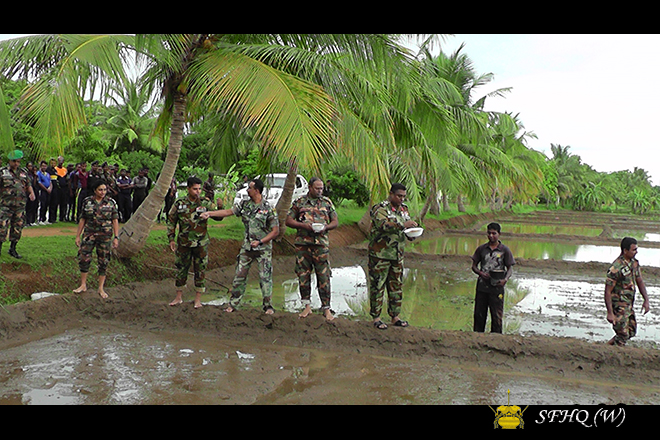
Military-led civilian engagement
Supplies were distributed to 150 families in Nedunkerni and Palinagar by the 56th Infantry Division, presenting the army as a benefactor to the people they once decimated.
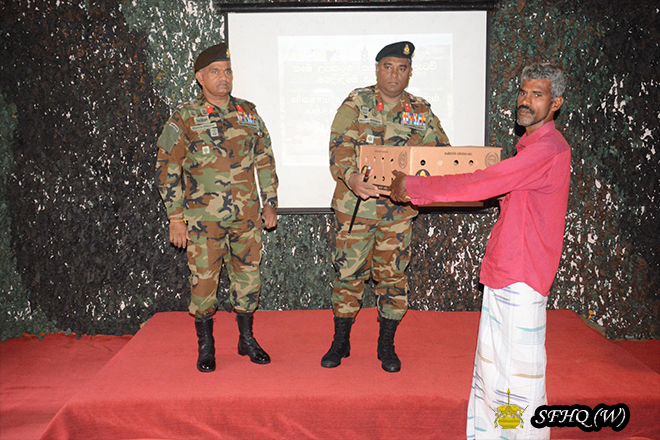
A water treatment plant was handed over to Kudimbimale village in the Eastern Province, tying essential services to the military.
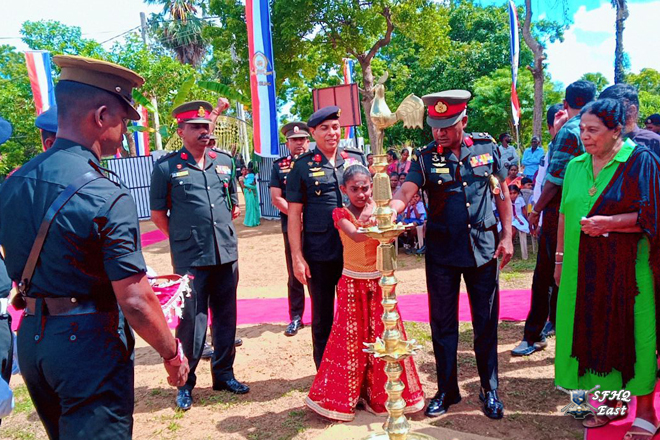
Soldiers from the 10th Gemunu Watch Battalion conducted a tree-planting programme in Mannar.
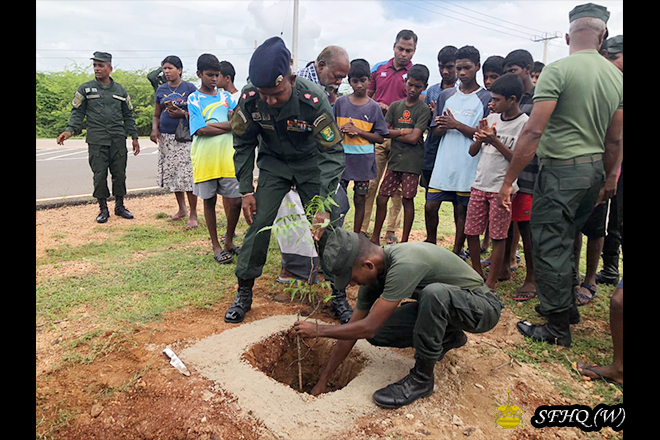
Cultural
The Sri Lankan army conducted a Katina Pooja ceremony at the Sri Sambodhi Viharaya Buddhist temple in Mullaitivu, highlighting the promotion of Sinhala-Buddhist culture in Tamil regions.
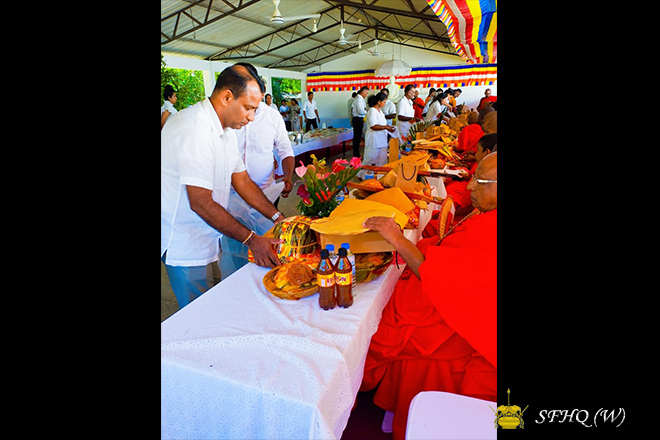
These strategies show that the militarisation of the North-East by the Sri Lankan government and army has continued to take place. Through infrastructure expansion, community programmes, and cultural activities, the Sri Lankan armed forces stays a visible and active entity in these regions.

